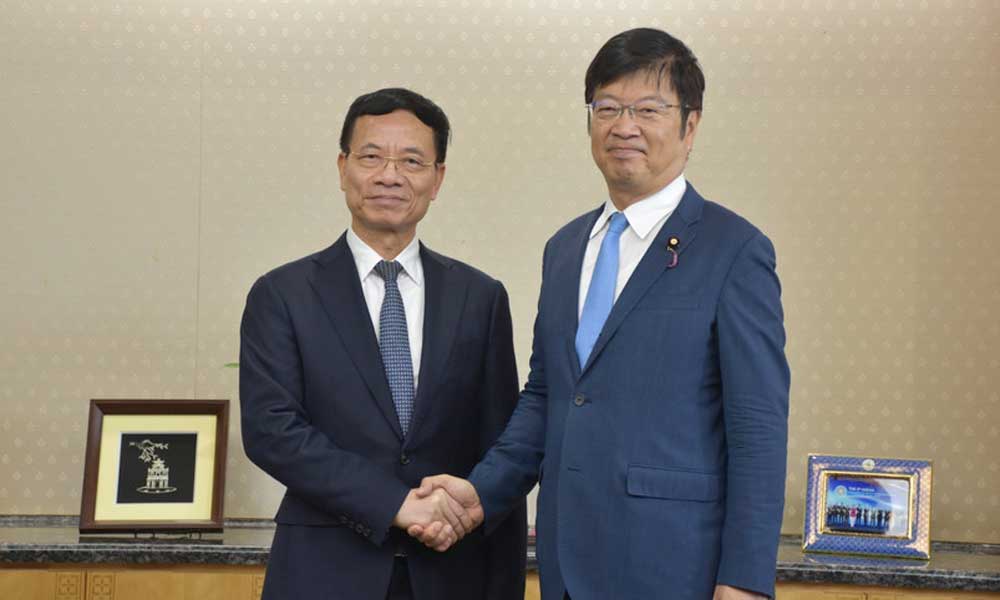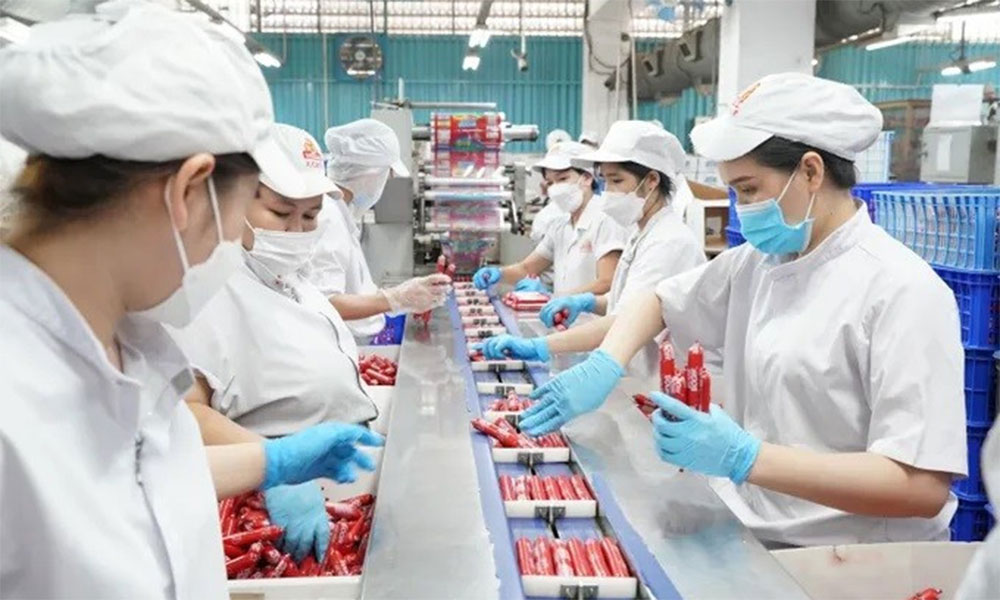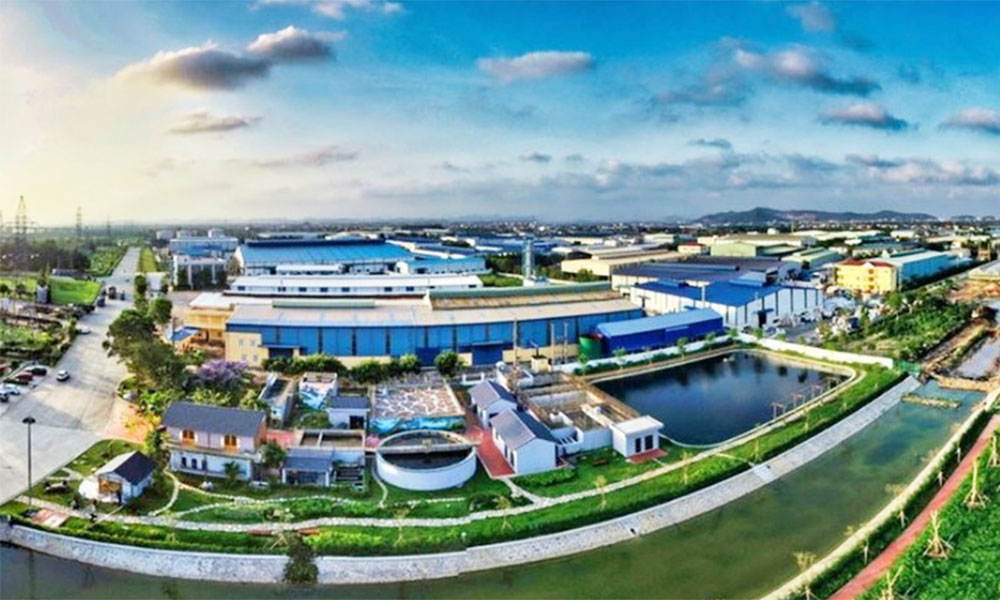Bac Ninh pioneers semiconductor industry development
BAC NINH — Thanks to steady improvements in its investment climate and increasingly comprehensive infrastructure, the northern province of Bac Ninh has emerged as a major draw for multinational companies, particularly in artificial intelligence and semiconductors, creating strong demand for highly skilled workers in the sector.
Local officials say the province’s industrial rise accelerated after the merger of the former Bac Giang and Bac Ninh jurisdictions, forming a new “super-industrial” province whose economy now ranks among the country’s top five.
 |
|
Vice Chairman of the provincial People's Committee Pham Van Thinh visits GoerTek Vina's new product display with other delegates. |
Bac Ninh has focused on industry as the primary engine of growth and has attracted about 3,300 foreign direct investment (FDI) projects from 44 countries and territories, including Samsung, Canon, Amkor, Foxconn, GoerTek and Luxshare.
FDI firms have been a central driver of the province’s export-led growth, with several companies reporting revenues well above plan despite global tariff volatility.
Notable examples for the first nine months of this year include Fuyu Precision Technology Co.,Ltd at an estimated 133 trillion VND (5.8 billion USD) in revenue, Fukang Technology Co.,Ltd at 151 trillion VND, Fulian Precision Technology Component Co.,Ltd at about 33 trillion VND and Microsoft Mobile at roughly 29 trillion VND.
 |
|
The factory of Amkor Technology Vietnam Company in Yen Phong II-C industrial park. |
Bac Ninh’s profile in the global semiconductor supply chain has risen sharply with large-scale investments. Amkor Technology is developing an OSAT (out-sourced semiconductor assembly and test) project valued at 1.6 billion VND at Yen Phong II-C industrial park.
South Korea’s Hana Micron Vina has committed more than 600 million USD to a complex in Van Trung industrial park.
Other recent semiconductor-related projects in the province include a Micro Commercial Components plant at Yen Phong I with 90 million USD in capital, Si Flex Vietnam with 299 million USD and Synergie Cad Vietnam with 21.2 million USD.
Apple supply-chain partners Foxconn and GoerTek have also expanded capacity and capital in the province, officials said.
 |
|
Production line at Canon Vietnam Company in Que Vo industrial park. |
“Semiconductor manufacturing is a backbone industry that supports electricity, electronics, automation, telecommunications and information technology,” said Vu Van Cuong, Deputy Director of the provincial Department of Finance.
He noted the global semiconductor market reached about 600 billion USD in 2024 and is forecast to approach 1 trillion USD by 2030, opening opportunities for investment in provinces such as Bac Ninh.
Meeting that demand, however, is a challenge. Vietnamese authorities estimate the country needs to train about 10,000 semiconductor engineers annually to support industry growth.
In Bac Ninh alone, the provincial industrial parks management authority counts roughly 50 active projects in semiconductor and near-semiconductor fields and projects a workforce demand of about 10,000 workers in the sector by 2025, rising thereafter.
If current growth trajectories hold, the province expects the semiconductor and AI manufacturing base to expand production value by roughly 30% per year and to account for about 6% of total industrial output value, requiring an estimated 40,000 workers in the sector by 2030.
Despite strong demand, the labour supply remains thin. Firms with modern capital and technology frequently struggle to recruit suitably trained engineers and specialists and sometimes must hire foreign experts to operate lines and train local staff.
Bac Ninh ’s proximity to Hanoi and its access to major universities — including Hanoi University of Science and Technology, FPT University and Hanoi Industrial University — give it a strategic advantage for skills development.
The province’s existing electronics ecosystem also offers opportunities for “learning by doing” and enterprise-led, targeted training.
Provincial planners have designated semiconductor-electronics as a strategic priority for 2021–2030 and are pursuing incentives, infrastructure and investment to support growth.
Officials say the next step is a targeted human resources strategy focused on industry-specific training, closer partnerships between companies and universities and policies to retain and upskill staff — measures they view as essential to sustain the province’s push to become a leading semiconductor workforce hub in Vietnam.
 Bắc Ninh
Bắc Ninh


















Reader's comments (0)